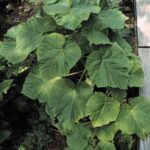Twenty-two shade trees are listed in order of the fastest growing in most of the U.S. Try to buy healthy trees that are at least 3 to 5 feet tall for planting. Best choices are balled-in-burlap or container-grown trees with a strong start. Tree heights are given for 3 years and at maturity.
1) One of the fastest growing trees is the Empress or “Princess tree” (paulownia). This tree can grow 10 to 15 feet in one year. In fact, one homeowner tells a story of her Empress tree, which was flooded out the first year and run over by a car the second, yet it survived to grow 10 feet tall in the third year.
At 3 years, the tree can grow to 35 to 50 feet, close to its mature height. It grows lovely, fragrant purple flowers.
2) Hybrid poplars (populus deltoides) are popular shade trees often planted around homes to increase property values. They grow at a rate of 8 to 10 feet per year, up to 30 or 40 feet by the third year. At maturity, they reach 50 to 70 feet.
3) The Nuttall Oak (quercus nuttalli) grows 7 to 8 feet per year, up to 25 to 30 feet in three years. It is the fastest growing oak tree and reaches 50 feet at maturity.
4) The Eucalyptus tree (eucalyptus polyanthemos) is easily identified by its fragrant leaves. It grows 6 to 8 feet the first year. By the third year, it should stand around 20 to 30 feet tall and reach 40 feet by maturity.
5) The common weeping willow (salix babylonica) is easily grown in various soil and moisture conditions and will grow about 4 to 8 feet the first year, reaching 15 to 30 feet in three years. This beautiful, swaying tree dances in the wind, and reaches a mature height of 40 to 50 feet. It loves to be near water, and its roots will seek underground pipes and sewage systems.
6) The American Sycamore (platanus occidentalis) will grow about 6 feet per year, up to 20 to 25 feet in three years. Its shedding bark exposes a visually attractive trunk, but cleaning up the peeling bark can be annoying to homeowners. A row of sycamores along a roadway creates a stately appearance that commands a second look. Its winter fruits look like Christmas ornaments. This tree needs room to grow to its mature 70 foot height.
7) The Tulip Poplar (Liriodendron Tulipifera) grows bright yellow foliage in the fall and creates dense shade at the rate of up to 6 feet per year. It should reach about 15 to 20 feet by its third year, with a mature height of 70 feet. The tree produces fragrant flowers in the spring, but they are usually placed so high, they can barely be seen. Some Tulip Trees grow over 150 feet, making it the tallest deciduous tree in eastern North America.
8) The Red Mulberry (moras rubra) grows a reddish-purple fruit that can be eaten by humans, birds, and small mammals. This tree will grow 4 to 6 feet per year and should be about 15 to 20 feet high in its third year. It has a broad, spreading crown and it reaches 40 to 60 feet at maturity.
9) The common Sycamore (platinus occidentalis) grows up to 5 feet per year, up to 15 to 20 feet by its third year. It shows off unique fruits during the springtime, which will cling to naked branches into wintertime. The sycamore will appeal to some, but it is prey to various diseases, which might be avoided with the newer hybrids. Its peeling bark, which is a bit messy, reveals interesting plaques of brown, grey, cream and white. A sycamore should ultimately grow 60 to 70 feet tall, but some exceed heights of over 150 feet.
10) The Quaking Aspen (populus temuloides) grows up to 5 feet per year and reaches about 15 to 20 feet by its third year. Its mature height should only reach about 40 to 50 feet. The rounded leaves, shiny green on top, dull green below, shimmer in the slightest breeze, thus its name. It also grows catkins up to 4″ long, which mature in spring. This is the most widely distributed tree in North America.
11) Listed under “trees” but considered by some to be bushes, depending on how it’s trained, Crape Myrtle (lagerstroemia) is very adaptable. It blooms from spring until fall and comes in lavender, pink, white, purple, and red blooms. Crape Myrtles grow about 4 to 5 feet the first year, up to 15 or 20 by their third year. They should ultimately reach 15 to 25 feet, and the open form creates a dappled shade.
12) The October Glory Maple (acer rubrum) grows 3 to 5 feet per year, up to 15 to 20 feet in its third year. Its ultimate height should be around 40 to 50 feet. This is a fast growing, oval-shaped ornamental tree. The leaves turn a breathtaking, intense red color in the fall and drop later than most trees. Almost all maples drop winged seed pods in the fall.
13) The Autumn Purple Ash (fraxinus americana) grows 3 to 5 feet per year, up to 15 to 20 feet by its third year. This makes a nice rounded form and creates a spectrum of colors in the fall. It should reach 50 to 70 feet at maturity. This is a seedless variety of ash.
14) Heritage River Birch (betula nigra “Heritage”) will grow 3 to 4 feet per year and should reach 15 to 20 feet by its third year. This tree has a papery silver bark and can reach 40 to 50 feet at maturity.
15) The Autumn Blaze Maple (acer x freemanii) grows 3 feet or more per year and should be about 15 to 20 feet tall by the third year. This maple does not drop seedpods and turns a brilliant red in the fall. It should reach about 40 to 50 feet at maturity.
16) The Mimosa or “silk tree” (Albizia julbrissin) grows 3 feet or more per year to reach a height of 15 to 20 feet by its third year. This tree forms beautiful silky-looking, bright pink flowers and has a relatively long life. It should ultimately reach about 20 to 25 feet. This tree will often form small shoots nearby, which can easily be transplanted to another location. Some nurseries consider this a “weed tree” and don’t offer them, but you can often pick one up from a sharing neighbor.
17) The Paper Birch (betula papyrifera) grows 3 feet per year, up to 15 to 20 feet at 3 years. The paper-thin bark exfoliates, creating visual interest, but can also be a bit messy in a yard. This tree grows to 40 to 70 feet at maturity.
18) The Norway Maple (acer platanoides) grows about 3 feet per year, up to 15 to 20 feet by its third year. This species can live up to 150 years, but they only reach a mature height of 40 to 50 feet.
19) A Pin Oak (quercus palustris) can grow 3 feet per year, up to 10 to 15 feet by its third year. This is a very common street tree that matures at 60 to 70 feet.
20) The Gingko Tree (gingko biloba) is readily recognized by its bright-yellow foliage in early spring. It grows about 3 feet per year, up to 10 to 15 feet by its third year. Its ultimate height should be between 40 to 70 feet. The female tree produces foul-smelling fruits. This is one of the oldest species of trees.
21) The Scarlet Red Maple (acer rubrum) grows 2 to 3 feet per year, up to 10 to 15 feet by its third year. This tree displays bright red flowers before its leaves appear and its showy fruits attract birds. Its mature height is 40 to 60 feet.
22) The Sawtooth Oak (quercus acutissima) grows 2 to 3 feet per year, up to 10 to 15 feet by its third year. This is the most adaptable oak tree in the U.S. and grows in all but the farthest northern-most regions. It is a durable tree, quite majestic in appearance. It will quickly grow to its mature height of 60 feet, with a 40 to 60 foot spread, so it’s not for small yards.
Sources:
The Audubon Society Field Guide to North American Trees, Eastern Region. 1992.
The Treasury of Gardening by Publication International, 2004.
http://www.fast-growing-trees.com.



